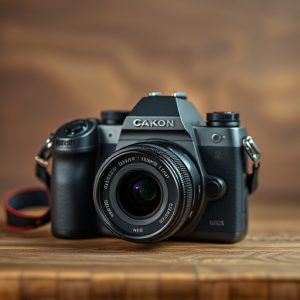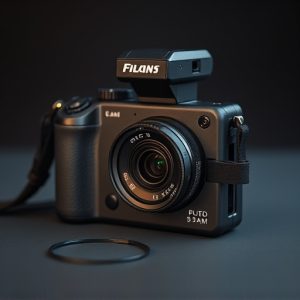Body Cameras in Law Enforcement: Market Review, Accountability Gains, and Legal Considerations
When selecting a body camera for sale, law enforcement agencies must consider a myriad of critical …….
When selecting a body camera for sale, law enforcement agencies must consider a myriad of critical features that ensure effectiveness and legality in diverse operational environments. Essential aspects include high-definition video recording, audio capture, night vision, wide-dynamic range sensors, advanced data storage solutions, durability with impact resistance and waterproofing, real-time streaming capabilities, and long battery life to facilitate all-day use. These features are paramount for capturing clear interactions and promoting transparency and accountability, which are essential for maintaining public trust. Body cameras serve as a deterrent to misconduct, providing undeniable evidence that upholds officer integrity and fair treatment for citizens. The adoption of these devices has led to enhanced transparency and public confidence in policing. However, agencies must navigate the complex legal landscape surrounding privacy, data protection, storage regulations, and compliance with surveillance laws. This necessitates comprehensive training for officers, clear usage policies, and robust data management protocols. Regular audits and policy reviews ensure responsible use within legal boundaries, reinforcing the body camera's indispensable role in fostering a more just and accountable policing environment.
In an era where public trust and law enforcement accountability are paramount, body cameras have emerged as pivotal tools. This article delves into the current market landscape for body camera for sale options, highlighting their diverse features that promise to enhance both transparency and situational awareness. We will explore how these devices are reshaping the face of law enforcement by providing clear, real-time records of interactions between officers and civilians. Additionally, we will navigate the complex legal terrain surrounding their use and offer best practices for effective body camera implementation. Join us as we shed light on the transformative role of body cameras in fostering a more just and accountable society.
Assessing the Market: Body Camera for Sale Options and Features
When considering the procurement of a body camera for sale, it’s crucial to evaluate the plethora of options available in the market. These devices have become an integral part of law enforcement, serving as a firsthand account of interactions and ensuring transparency and accountability. Among the myriad models, certain features stand out as particularly beneficial. High-definition video recording, for instance, offers clear evidence, while integrated audio capture can provide context to events as they unfold. Night vision and wide-dynamic range sensors are essential for capturing images in low-light conditions or high-contrast environments. Additionally, many body cameras for sale come equipped with advanced data storage solutions that securely save footage, ensuring its integrity and availability when needed.
Furthermore, when assessing body camera options, one must consider the durability and design of these devices. A lightweight and ergonomic design is preferable, as it allows for continuous wear during long shifts without discomfort. Impact resistance and waterproof capabilities protect the cameras in various conditions, making them reliable in diverse situations. Features such as real-time video streaming and instant data upload can facilitate immediate evidence sharing, which can be pivotal in critical incidents. Some models also boast long battery life and low power consumption, essential for all-day use without frequent recharging. With a variety of body cameras for sale, each with its own set of features and capabilities, it’s imperative to carefully evaluate these aspects to select the most suitable option for your department’s needs.
The Impact of Body Cameras on Law Enforcement Accountability and Transparency
Body cameras have become a pivotal tool in the realm of law enforcement, offering a clear and objective record of interactions between officers and civilians. These devices serve as a deterrent to misconduct by providing indisputable evidence of police actions, thereby enhancing accountability within departments. The footage captured by body cameras not only safeguards officers against false accusations but also ensures that citizens receive fair treatment under the law. With the rise in body camera sales, law enforcement agencies are increasingly adopting these devices as a standard component of their patrol kits. This proliferation has led to a marked increase in transparency and public trust, as incidents can be independently reviewed. The availability of high-quality body cameras for sale has made it feasible for agencies to equip their officers with these critical tools, fostering a more accountable and just policing environment. As the technology continues to advance, the integration of body cameras is expected to play an even more significant role in upholding law enforcement integrity and maintaining community confidence.
Navigating Legal Considerations and Best Practices in Body Camera Implementation
In recent years, law enforcement agencies have increasingly turned to body-worn cameras as a means to enhance transparency, accountability, and public trust. When procuring a body camera for sale, it’s crucial for departments to consider the legal landscape that governs the use of such technology. Legal considerations include privacy concerns both for the officers and civilians involved, as well as data protection and storage mandates. Agencies must ensure compliance with state and federal laws regarding surveillance and recording. They must also establish clear policies on when and how cameras are used, which is a process that involves close collaboration with legal advisors.
Best practices in body camera implementation extend beyond mere legality. Effective training for officers on the proper use of cameras, including understanding the scope of their recording activities, is paramount. Additionally, agencies should develop comprehensive data management protocols to handle the large volumes of footage collected. This includes outlining who has access to the recordings and under what circumstances they can be accessed or disclosed. Transparency in how body camera footage is used, stored, and shared is essential for maintaining public trust. Furthermore, regular audits and policy reviews ensure that these technologies are being utilized responsibly and effectively within the framework of the law. By carefully navigating legal considerations and adhering to best practices, law enforcement agencies can maximize the benefits of body cameras while minimizing potential risks and challenges.


